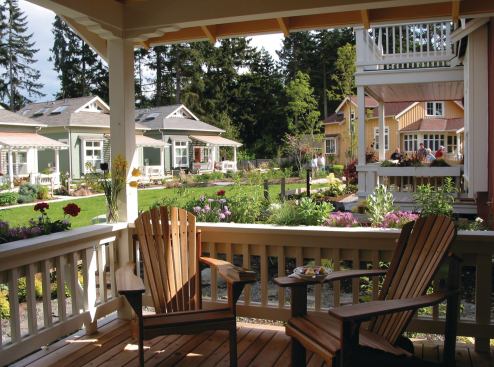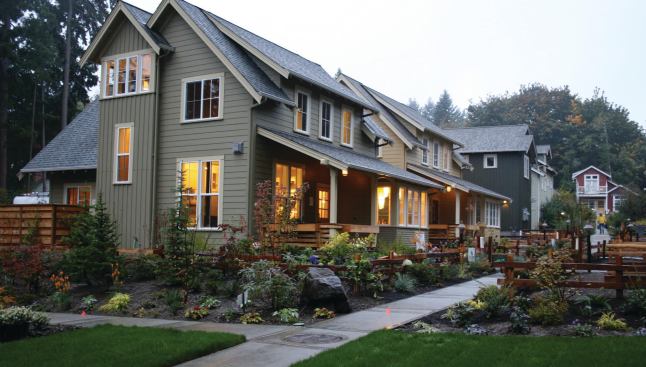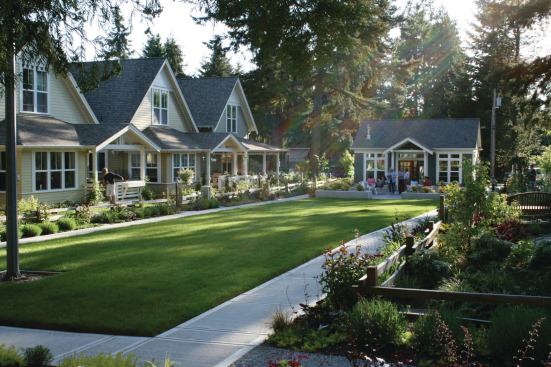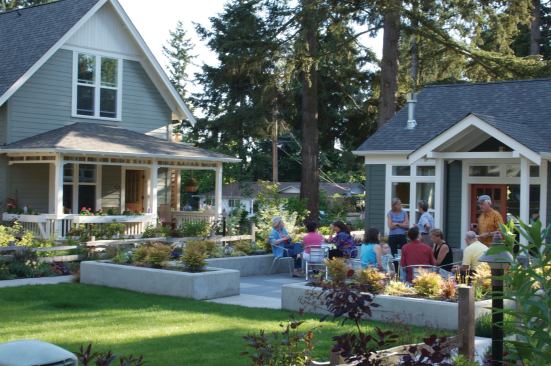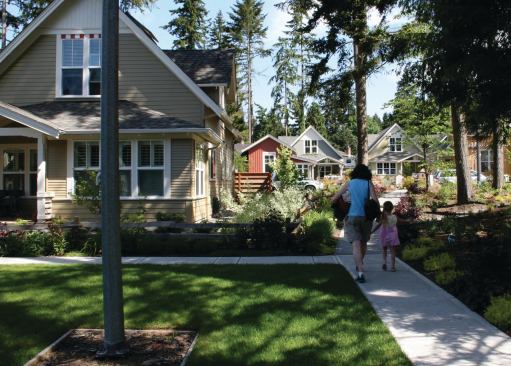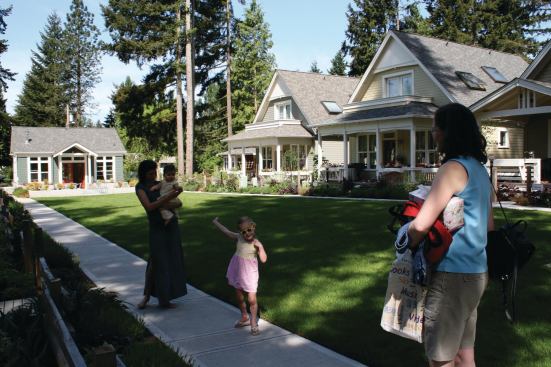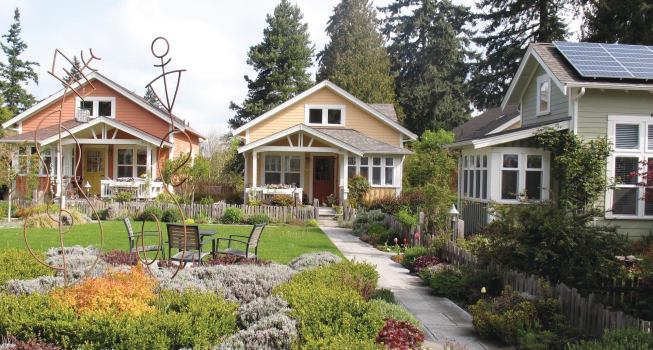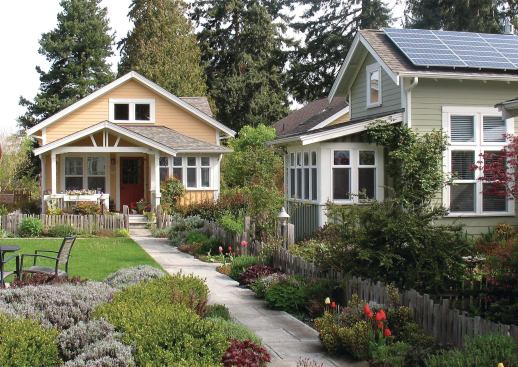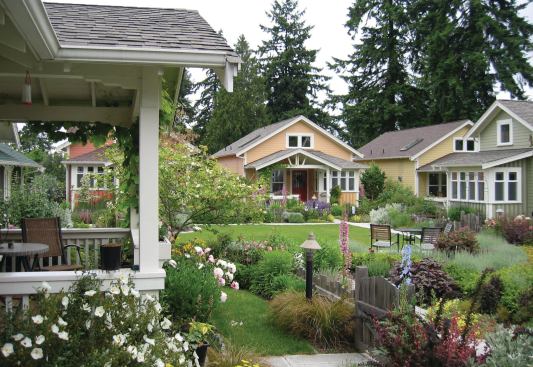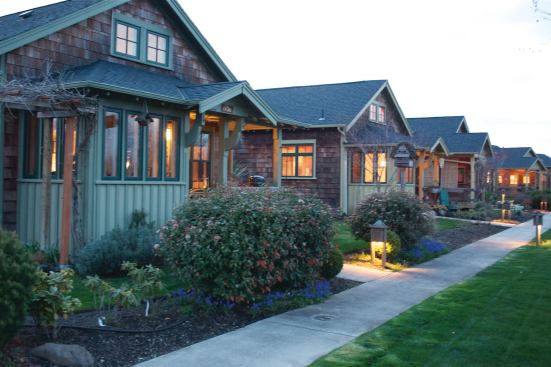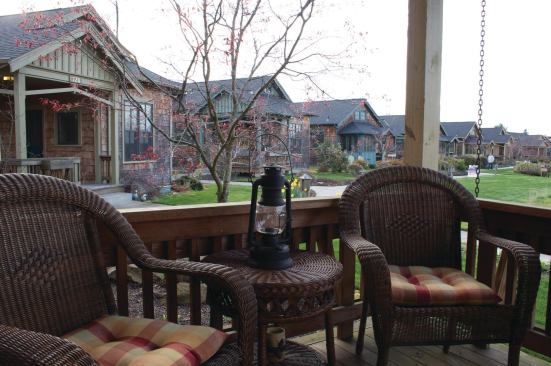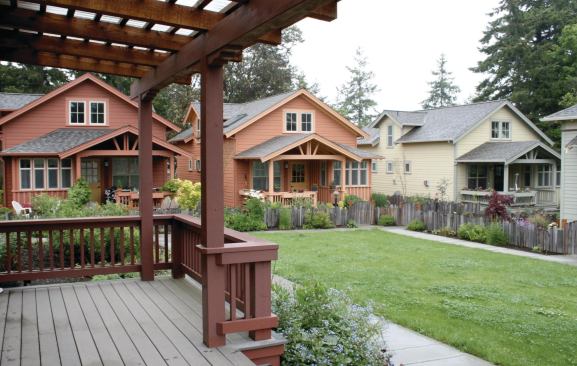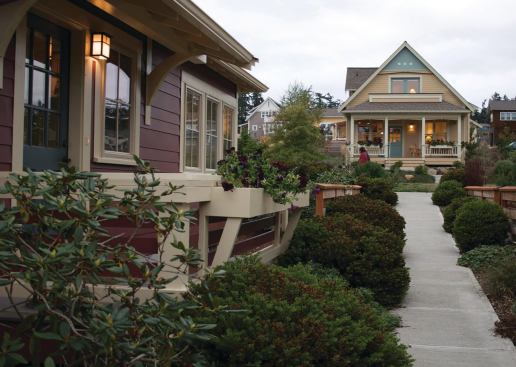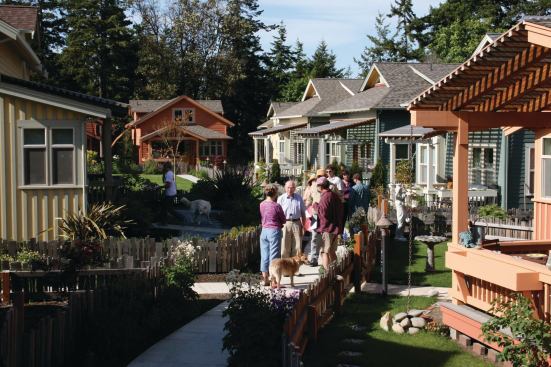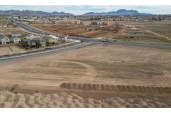Ross Chapin Architects
It’s easy to blame sprawl for thorny issues such as social alienation, obesity, global warming, and a high cost of living. But while policy debates have raged for decades about how to do things differently, Seattle architect Ross Chapin has been quietly going about it one acre at a time. Chapin is the brains behind the “pocket neighborhood,” a micro-scale development model that clusters no more than a dozen small homes or apartments around a shared common space such as a garden, courtyard, or alley, with parking at the periphery.
The brilliance of the pocket concept is its versatility. A nimble little 12-pack can offer an alternative to the conventional subdivision, but it’s not an all-or-nothing proposition. Pocket neighborhoods can also serve as connective tissue in the forgotten spaces between cul-de-sacs and commercial areas, rendering walkable what was previously accessible only by car. In this role, the prototype has set new precedents for infill development and has even inspired alternative zoning codes.
Four Questions

Ross Chapin Ross Chapin Architects Langley, Wash.
Credit: Ross Chapin Architects
What makes today’s market ripe for the pocket concept?
As small phase developments, pocket neighborhoods operate on a scale that is marketable and fundable with less risk and quicker absorption. They are versatile building blocks and can help diversify local housing choices.
Why can’t a pocket neighborhood have more than a dozen houses?
We are human social beings, but we can only relate in a neighborly way to a limited number of people. You can have a development of 200 houses, but have pockets within that development that are more relatable in scale.
Many of your homes are under 1,500 square feet. Is that enough space for the average American?
Pocket neighborhoods provide a context for people to live more simply together. Houses can be smaller, in part, because there are shared spaces. This might be a tool shed and gazebo, or it might be a larger common building with an overnight guest facility. Everybody doesn’t have to own a lawnmower, shovel, rake, and weed whacker. Some neighborhoods even share a flex car. This saves money, but it’s more about simplifying. When you have less to take care of, you have more time to spend on things you love.
Pocket neighborhoods still represent only a tiny fraction of the housing landscape. Do you find that discouraging?
To mend the fabric, you have to start somewhere. You start in one place. Then you mend another section and another. Then you begin to join those places together.
Chapin, who has been the development partner in six pocket ventures and designed site plans for 40 additional projects (his latest is in Indianapolis), explains the pocket as a kind of “neighborhood within a neighborhood” that can fit easily into an urban, suburban, or rural setting. Now it’s the subject of a new book, Pocket Neighborhoods, and a website for builders: www.pocket-neighborhoods.net.
Learn more about markets featured in this article: Indianapolis, IN.
